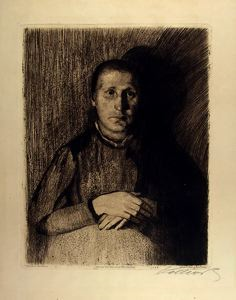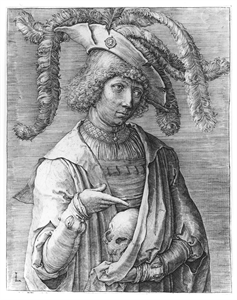
Käthe Kollwitz
German, 1867–1945
Kollwitz produced this image, an early self-portrait, while she worked on her first great print series, "A Weavers Revolt" (1894-1898). Inspired by an 1893 play written by Gerhart Hauptmann (German, 1862–1946), this suite of six prints sympathetically recounts the story of the poverty, revolt, and death of the Silesian weavers in 1844. "Weavers" established her artistic reputation and identified her as an important defender of Germany’s oppressed underclass. Throughout her long and productive life she created prints that addressed her socialist and pacifist passions despite living under repressive governmental regimes—that of Kaiser Wilhelm II at the start of her career, and the Nazis at the end of it.
German, 1867–1945
Woman with Folded Hands
1898
Object Type:
Print
Dimensions:
11 1/4 in. x 8 7/8 in. (28.58 cm x 22.54 cm)
Medium and Support:
Etching on paper
Accession Number:
1982.0019.0001
Credit Line:
Gift of Mr. and Mrs. Adolph Weil, Jr., in memory of Mr. and Mrs. Adolph Weil, Sr.
Copyright:
© Estate of Käthe Kollwitz. Licensed by ARS, New York, NY
Kollwitz produced this image, an early self-portrait, while she worked on her first great print series, "A Weavers Revolt" (1894-1898). Inspired by an 1893 play written by Gerhart Hauptmann (German, 1862–1946), this suite of six prints sympathetically recounts the story of the poverty, revolt, and death of the Silesian weavers in 1844. "Weavers" established her artistic reputation and identified her as an important defender of Germany’s oppressed underclass. Throughout her long and productive life she created prints that addressed her socialist and pacifist passions despite living under repressive governmental regimes—that of Kaiser Wilhelm II at the start of her career, and the Nazis at the end of it.
Keywords
Click a term to view the records with the same keyword
Portfolio List
Click a portfolio name to view all the objects in that portfolio
This object is a member of the following portfolios:
Your current search criteria is: All Object records and [Object]Century is "Nineteenth century".

 by Artist (109)
by Artist (109)
